Navigating Spain’s Plastic Sea
The booming business of expanding greenhouses for evermore vegetables for Europe has taken over south-east Spain.
Plastic greenhouses cover an area greater than Malta in Spain’s southern Almería province, where a boom in highly efficient and profitable intensive agriculture has turned the region into the fruit and vegetable garden of Europe.
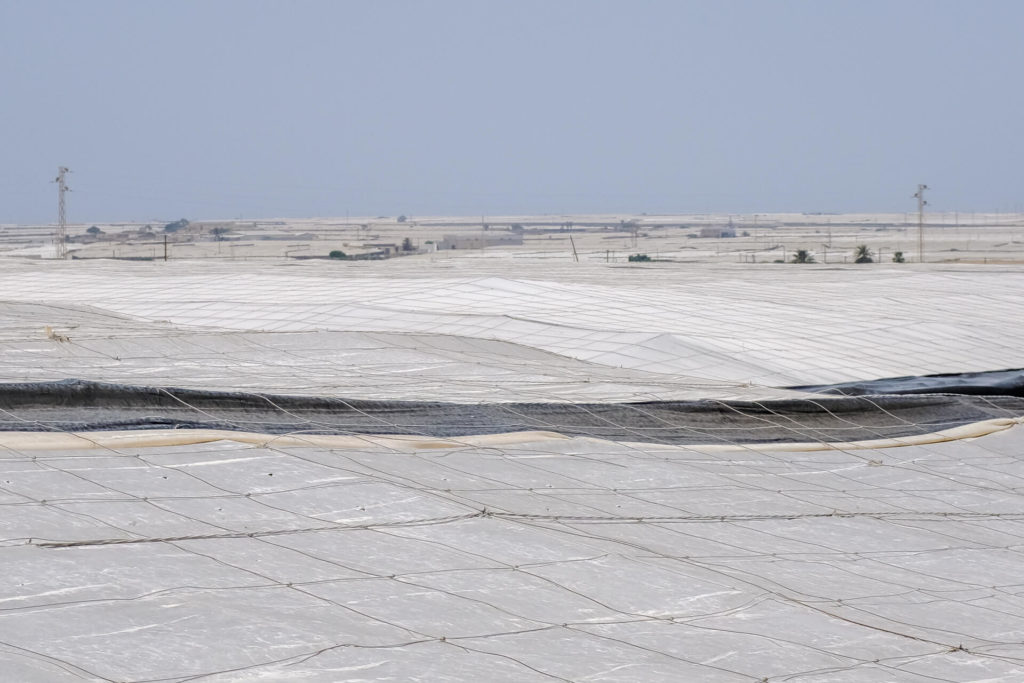
A hillside vantage point provides a panoramic view of a portion of the “mar de plástico” (sea of plastic), as it is locally known, that has swallowed up Almería’s Mediterranean plains. Towns and villages rise from it like little islands. However, the sheer scale of the mar de plástico can only truly be appreciated from space. To an astronaut orbiting overhead, swathes of Almería appear bleached of all color as the sun’s light rebounds off some 370km2 of thick plastic sheets.This is the largest concentration of greenhouses on the planet.
Mapping plastic
Back on Earth, we are standing on a low ridgeline in the countryside just north of the Cabo de Gata Natural Park.
“You can see it on the map,” Umberto Zanesi, a member of Ecologistas en Acción (Ecologists in Action), a Spanish environmentalist group, tells REVOLVE as he zooms in our location on his phone. He is not referring to the sea of plastic in this case, but rather a dumping site where plastic waste from greenhouse farms has been left to sit in the open.
It is one of nearly 400 illegal dumping sites that his organization has flagged and pinned on an interactive map of Almería’s province as part of an initiative called Stop Vertidos Ilegales (Stop Illegal Dumping). Zanesi says one of the group’s main challenges is to get local authorities to act. This dump, he adds, has been here for around five years. On its website, the group says it has officially reported 198 illegal waste dumps but that just 11 have been cleaned up.
The sea along the coast of Almería has been found to have three times the average quantity of microplastics than elsewhere.
Source: IDAEA
Some of the plastic sheeting at the dump we have come to visit, which spans 100m2, is at a later stage of breakdown. A spiny-footed lizard darts through the plastic flakes littering the soil in search of shelter. The longer the plastic remains here, the greater the chance microplastics will seep into the earth and the water system. The sea along the coast of Almería has been found to have three times the average quantity of microplastics, according to the Institute of Environmental Assessment and Water Research (IDAEA).
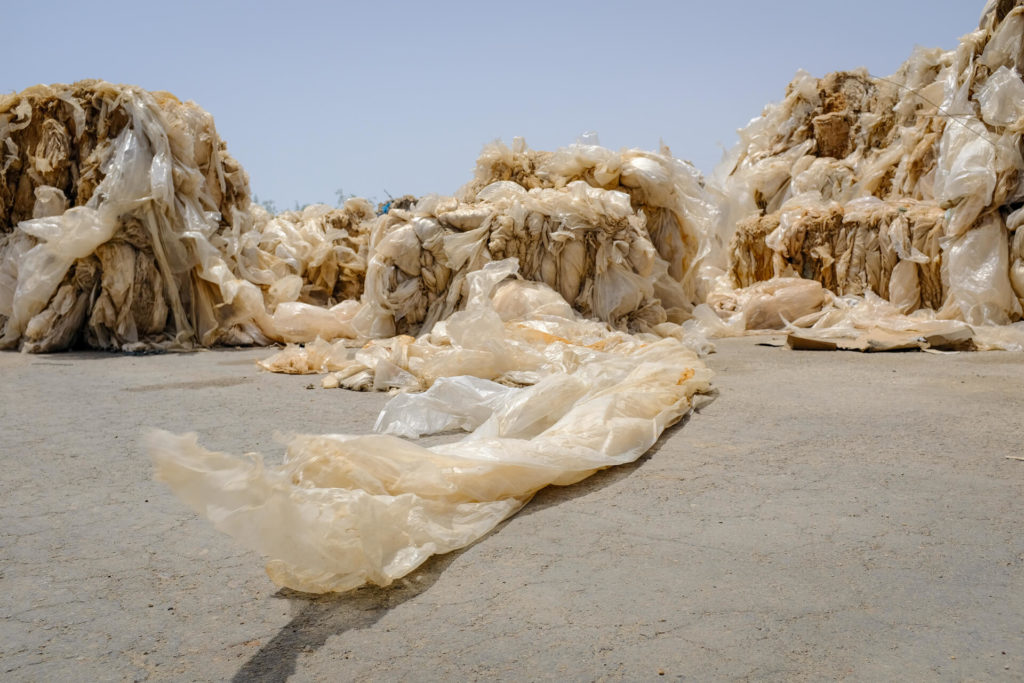
According to the regional government of Andalusia, 85% of agricultural plastic waste is recycled but 15%, or some 5,000 tons annually, is not. By law, local greenhouse farm owners must dispose or recycle waste plastic through official channels although there is no formal mechanism in place to follow the disposal chain from start to finish. It means illegally dumped plastic waste is untraceable. Running parallel to the official disposal channels are unregulated services that undercut prices to take plastic off farmers’ hands. Zanesi believes a lot of the issues around plastic waste in the region stem from structural deficiencies linked to the development model of the local agro-industrial sector.
“While they invest in boosting production and maximizing profits, issues like waste management and water management, as well as the impact of chemicals and social issues, always figure as secondary problems that they attempt to solve subsequently, and never reach a definitive solution,” he tells REVOLVE.
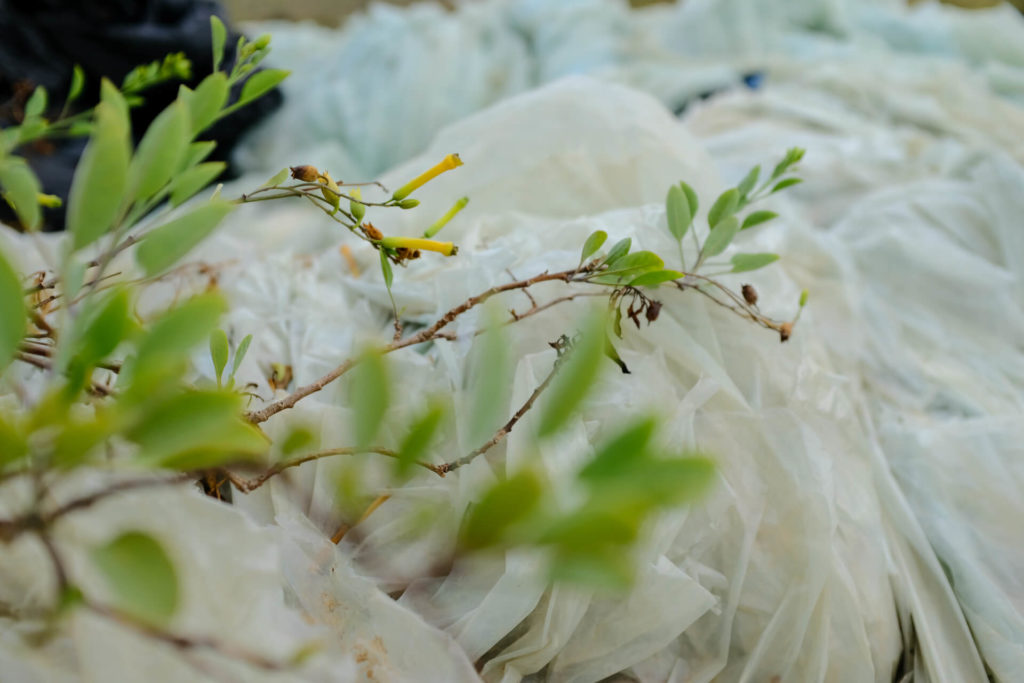
Zanesi points out that the environmentalist group wants to work with the farmers in the region. “In this sense, we believe that the whole market chain, from the producers to the distributors and consumers, should be co-responsible for these impacts and assume the environmental costs. Some 80% of the produce is exported, for which reason it is the European market, the governments, and the EU who must look for formulas to build a truly sustainable agro-industrial model.”
More crop per drop
The model of agriculture in Almería — and in other parts of southern Spain — is highly productive. The use of greenhouses in this warm climate means farmers can harvest produce several times a year and sell fresh fruit and vegetables to northern European countries during the winter. Hydroponic irrigation, which can be precisely controlled by computers, also means that the use of water in this arid corner of Spain – home to what is considered Europe’s only true hot desert – is extremely efficient.
However, put together, the sheer sum of greenhouses that occupy the province means there is a large collective demand for freshwater. The Jevons paradox springs to mind. Ecologistas en Acción says the aquifers in the region are overexploited and exposed to microplastics and to salination by seawater, which seeps into groundwater when levels are lowered.
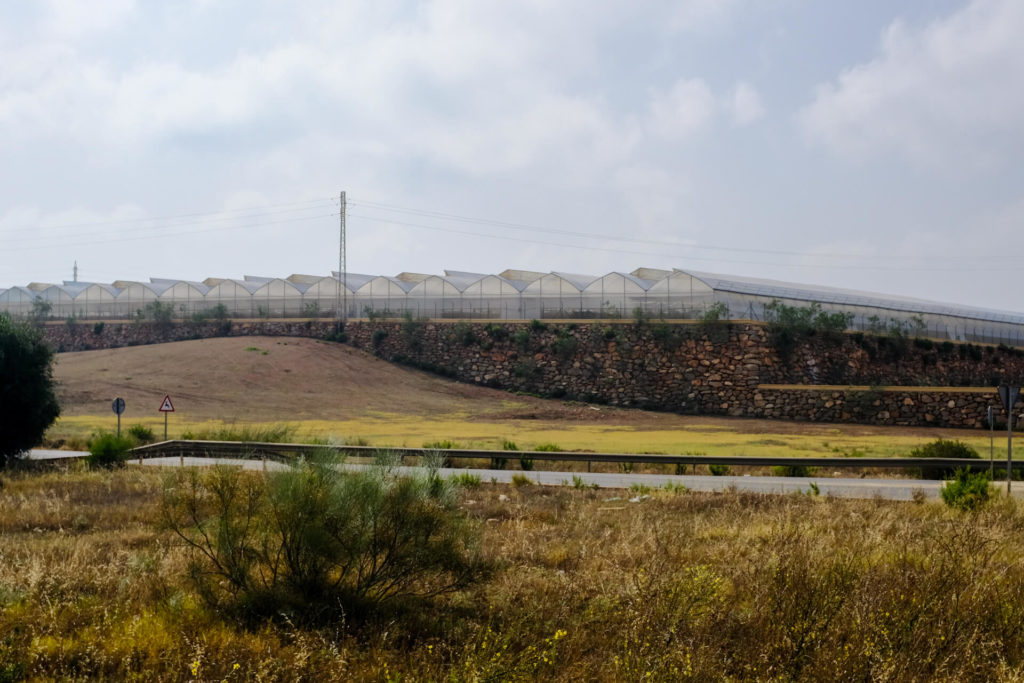
This situation has led to a rise in desalination plants, which are very energy-intensive and present secondary issues such as increased carbon emissions due to their reliance on fossil fuels. This challenge is being addressed in Almería by the EU-funded WATER-MINING project, which is researching the use of solar energy from concentrated solar power (CSP) to fuel desalination processes.
Pride, prosperity & poverty
The intensive greenhouse farming in Almería is astronomical in scale and colossal in terms of economics. Since the 1960s, this ever-expanding cluster of greenhouses has brought relative prosperity to a region previously blighted by poverty. It is a major source of local pride, and income.
Today, during the growing periods, thousands upon thousands of greenhouses burgeon with tomatoes, peppers, zucchini, cucumbers, eggplants, melons, watermelon, and lettuce. Between October 2021 and 2022, Almería’s greenhouses produced over 3.5 million tons of fruit and vegetables, drumming up some 2.79 billion euros. Around 3/4 of the produce in that campaign was exported to 13 European Union countries and the United Kingdom. Germany was the top buyer that year, shipping in nearly 950,000 tons of produce.
The prowess of the expanding agricultural model ripples across the local economy. In El Ejido, a major town in the sea of plastic, adverts sell greenhouse insurance and seeds while phone numbers spraypainted on the side of greenhouses offer bleaching and plastic disposal services.
However, the shantytowns and rundown buildings in the region tell another side of this economic success story. It is a well-documented one of often dire working and living conditions for the many thousands of mainly migrant workers who toil away in the greenhouses often at night to avoid the heat of the day.
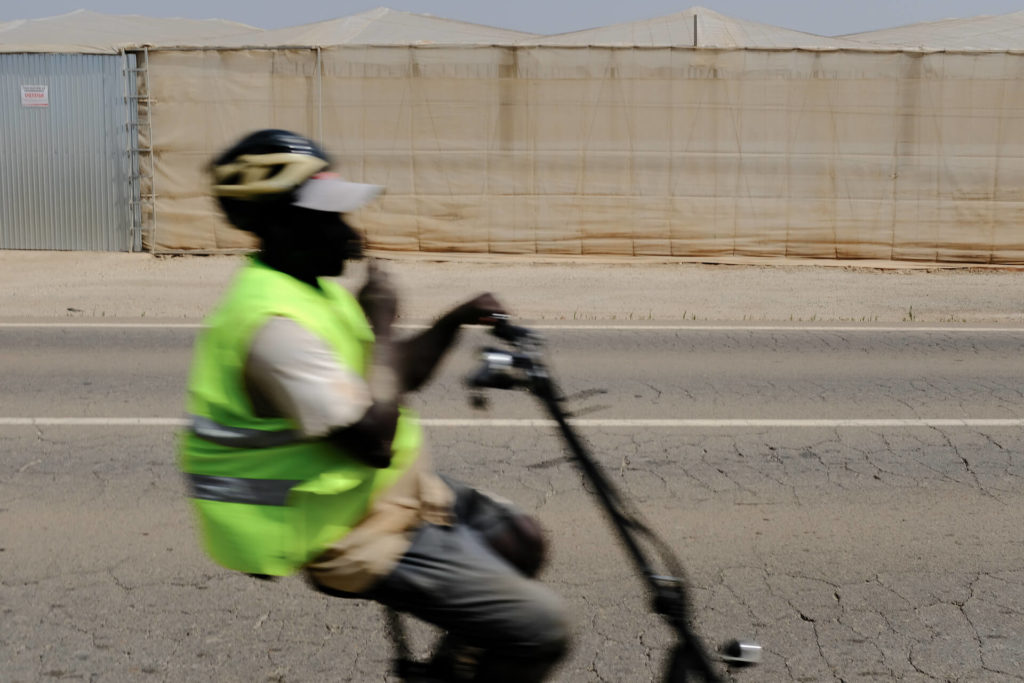
A maze of plastic
It is mid-July 2023 and many of the greenhouses are empty, lying in wait for the next planting season the following month. There is little action, although occasionally the silent and languid heat that has settled over the nameless dirt tracks is interrupted by a passing worker on an electric scooter. The odd truck emblazoned with images of vegetables trundles down the lanes of plastic.
On the ground somewhere between La Mojonera and El Ejido, on the Campo de Dalías coastal plain south-west of Almería city, greenhouses line the labyrinthine roads that wind from roundabout to roundabout, town to town. Here, the sea of plastic is at its most dense as small-scale farms seemingly jostle for every inch of land. In stark contrast to the nearby Cabo de Gata Natural Park, there is little room here for nature among the 222km2 of greenhouses.
Some organizations in the sea of plastic are working to address ecological degradation. At the Andalusian Institute of Agricultural and Fisheries Research and Training (IFAPA) in La Mojonera, the multi-pronged RECICLAND project is underway to boost local biodiversity and the sustainability of the greenhouse farming model in the region.
At RECICLAND’s demonstration site behind the IFAPA center, researchers are demonstrating the potential of green corridors as a biodiversity booster as well as more circular solutions within agricultural practices, including efficient ways to reuse, recycle and manage plastic and organic waste.
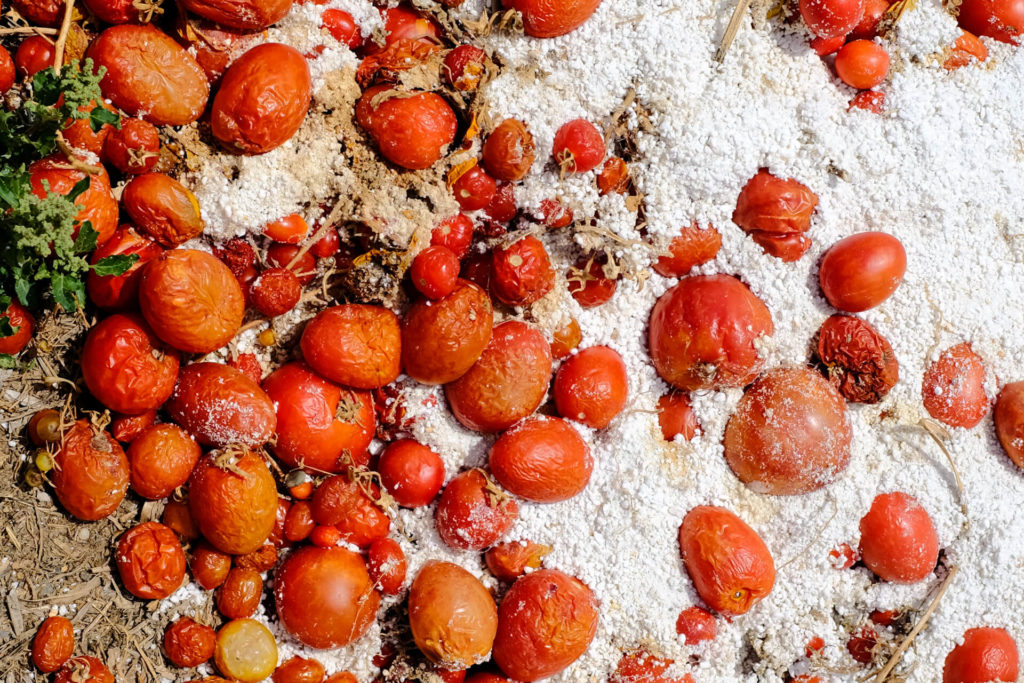
Waste not, want not
One of the effective solutions at the trial site is the reuse of waste organic products such as fruit and vegetables discarded at harvest. While it seems simple, this practice is the root of a domino effect that goes beyond improving the local soil health with natural fertilizers, says Alvaro Sánchez, director of IFAPA’s La Mojonera center.
“Incorporating crop waste into the soil is a way to fix CO2 while also reducing the need to transport said residues, which also reduces CO2 emissions, as is the case with the recycling of other elements such as plastic covers, containers, irrigation materials […] but the implementation of these practices that we promote in the project have other greater and more direct benefits in the lives of farmers and consumers,” he tells REVOLVE in an interview.
“The reuse of crop waste increases the organic matter of the soil, which leads to edaphic ecosystems with greater and more balanced biodiversity. This improves the plant health of crops and leads to the reduction of phytosanitary treatments. A high content of organic matter results in lesser use of fertilizers, which have become exponentially more expensive in recent years, and in less soil contamination by nitrates,” Sánchez notes.
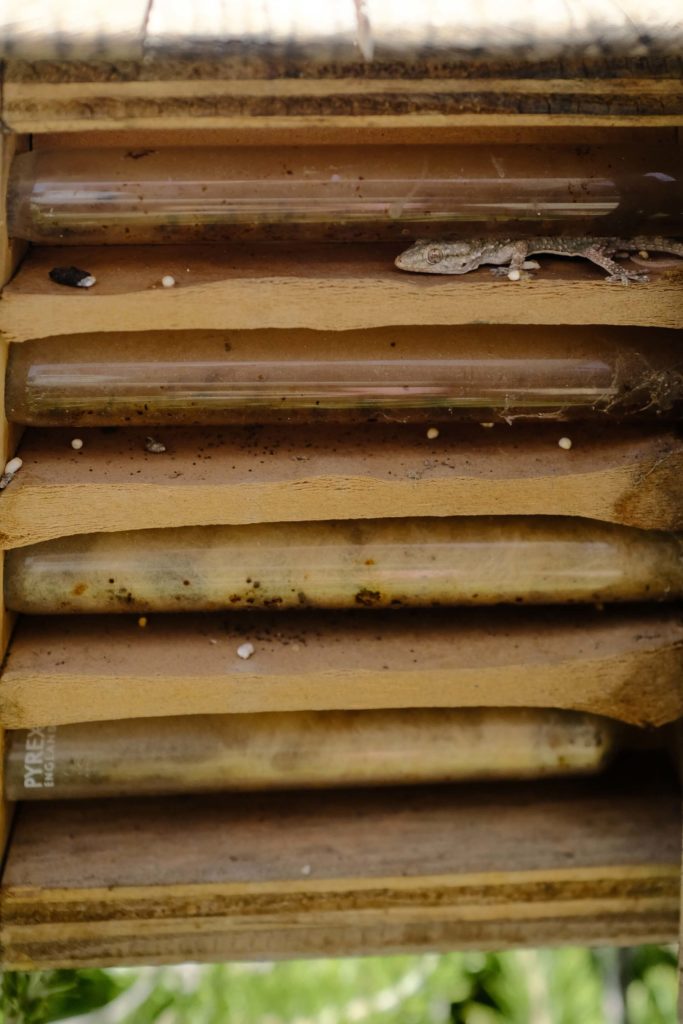
This ethos of circularity is also reflected in the plastic waste management innovations on show at the center, as demonstrated by one of the bug hotels fabricated from discarded plastic piping that once served an agricultural purpose.
“The recycling of inorganic material like plastic provides a chance to give a second life to these materials, which are no longer treated as waste but become a new primary material to make new products. Increasing biodiversity creates a more resilient environment in the face of insect plagues and helps us ward against this at a lower cost,” he says, adding that “these practices have a very positive impact in many aspects: environmental, economic, commercial, and food.”
A greener future?
Dr. María Del Mar Tellez Navarro, a lead technician at the center, tells REVOLVE that encouraging biodiversity through the introduction of native hedgerows can also benefit local ecosystems in a region dominated by greenhouses.
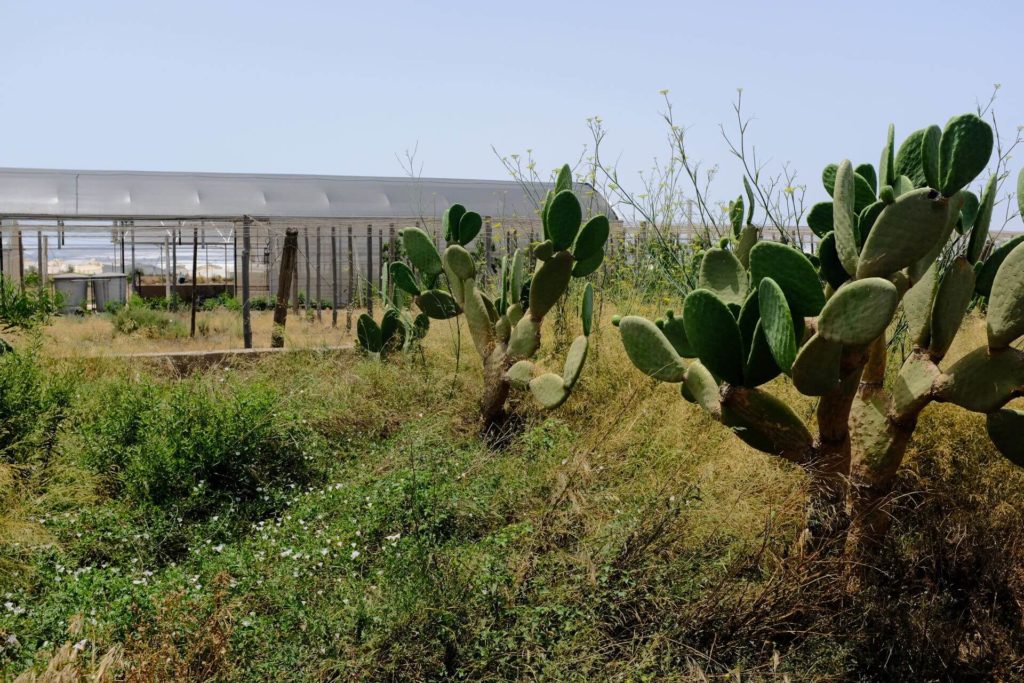
“Greenhouse horticultural crops are a more intensive production system than other agricultural or outdoor systems. These hedges are made up of multi-annual plants of varied sizes and that are well adapted to the environment. The selection of species is carried out in such a way that flowering is staggered, to attract beneficial insects throughout the year and reduce the visual impact of the agricultural infrastructure,” she explains.
The benefits of the green corridors are on full display at the RECICLAND project site, where despite the summer heat, native plant species add color and shade to the landscape. Occasionally dotting these hedgerows are man-made wooden boxes that provide shelter to local geckos. Since it was launched in 2021, some 1,116 people, including representatives of public organizations, the private sector, and education centers have visited the RECICLAND demonstration site to gain knowledge.
“Without a doubt there is a growing interest in various technical solutions to manage farming waste, and that are in line with the reuse or recycling of inorganic and organic materials generated by greenhouse agriculture,” Tellez adds.
Looking out from the IFAPA education center, the view is much the same as elsewhere in this corner of Almería — a sea of white plastic that stretches down to the Mediterranean Sea. But thanks to projects like RECICLAND, perhaps one day the landscape will look just a little greener.
